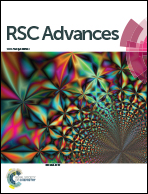Metastable monoclinic [110] layered perovskite Dy2Ti2O7 thin films for ferroelectric applications
Abstract
Using the Combinatorial Substrate Epitaxy (CSE) approach, we report the stabilization of Dy2Ti2O7 epitaxial monoclinic, layered-perovskite phase Dy2Ti2O7 thin films. To achieve this, the films are deposited on high density, polished La2Ti2O7 polycrystalline ceramic substrates, which are stable as monoclinic layered-perovskites, and were prepared by conventional sintering. Microstructural analysis using electron backscatter diffraction (EBSD), electron diffraction (ED), and high-resolution transmission electron microscopy (HRTEM) support this observation. Further, they reveal that the cubic pyrochlore phase is observed far from the interface as films are grown thicker (100 nm), confirming the importance of substrate-induced phase and space group selection. This works reinforces the vast potential of CSE to promote the stabilization of metastable phases, thus giving access to new functional oxide materials, across a range of novel material systems including ferroelectrics.
![Graphical abstract: Metastable monoclinic [110] layered perovskite Dy2Ti2O7 thin films for ferroelectric applications](/en/Image/Get?imageInfo.ImageType=GA&imageInfo.ImageIdentifier.ManuscriptID=C9RA04554F&imageInfo.ImageIdentifier.Year=2019)
- This article is part of the themed collection: Editors' Collection: Ferroelectric and Multiferroic Materials


 Please wait while we load your content...
Please wait while we load your content...